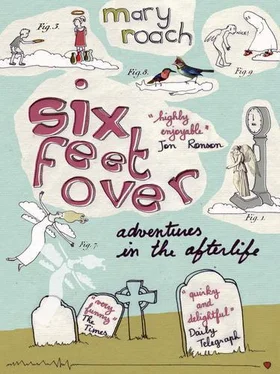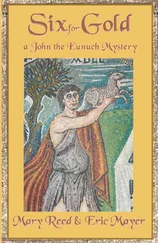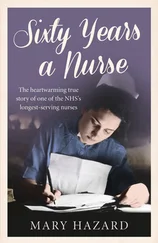SO HOW ARE we to explain Macdougall’s befuddling finding? I have some theories for your consideration.
Theory the First: Duncan Macdougall was a nutter. I was an early supporter of the nutter theory, based largely on the fact that Macdougall was a member of the Massachusetts Homeopathic Medical Society. He wrote his medical school thesis on the Law of Similars, the underlying principle of homeopathy—basically Like Cures Like. I don’t know what homeopathists get up to nowadays, but back in the movement’s infancy it was nutter central. The homeopathists’ bible, A Dictionary of Practical Materia Medica , is a three-volume compendium of plants, animals, and minerals, and the symptoms they produce if you ingest them, which homeopathists did a lot of, perhaps accounting for the nutter situation. The central tenet was that substances that cause healthy people to get certain symptoms can cure diseases with these same symptoms. The early homeopathists spent years dosing themselves and their patients and friends with every substance they could get hold of, and carefully cataloguing the reported symptoms. I can’t vouch for the movement’s contributions to the healing arts—without control groups or placebos, the Materia work is meaningless by modern research standards—but I must commend their flair for language. For example, we have alumina causing “dreams of horses, of quarrels, of vexations” and a “tingling on the face, as if it were covered with a white of egg dried.” Agnus castus causes “odor before the nose, like herrings or musk,” as well as “feeble erections” and—it almost goes without saying—“great sadness.” And then there is chamomile, said to cause the symptom “cannot be civil to the doctor.”
But at the time Duncan Macdougall went to medical school, in 1893, homeopathy was not considered a fringe branch of medicine. About half the country’s medical schools—including Macdougall’s alma mater, Boston University—still taught the homeopathic approach to healing. (BU had dropped it by the early 1920s.) The point is, plenty of mainstream, straight-ahead physicians practiced homeopathy in Macdougall’s day.
Also working against the touchy-feely flake theory are the plentiful examples of Macdougall’s consistent toe-the-line geekdom. He was class president and class orator at BU. A 1907 article in the Boston Sunday Post flatly stated that Macdougall was a believer in neither spiritualism nor psychic phenomena. A Haverhill Evening Gazette piece described him as “hard-headed and practical.” Greg Laing, head of the History Room at the Haverhill Public Library, recalls visiting the Macdougall household with his parents as a boy, so I asked him about the good doctor’s nutter potential. (Macdougall had died by then, but his widow and son were still living.) “God, no,” said Laing. “They were such grim, straitlaced people. Really and truly, they were not esoterically inclined.” I phoned Olive Macdougall, the widow of Macdougall’s only grandchild. Though her husband never knew his grandfather, Olive confirmed the family’s decidedly nonmystical bent. Her father-in-law, Duncan’s son, was a banker and lawyer.
The writer of Duncan Macdougall’s Gazette obituary tried to foist a little jollity on the man, but it was a thin effort: “He was cheerful in the sickroom and some of his sickroom phrases and words of encouragement remain on the tongues of his patients. A few of his sickroom phrases were: ‘Don’t you worry, my gal, everything will be all right’ and ‘Don’t you worry and you’ll get well in a bigger hurry.’”
Macdougall was neither madman nor visionary. What he was, I’m guessing, was a henpecked little man in need of attention. Greg Laing described Macdougall’s wife Mary as “a battleaxe of monumental proportion.” (Perhaps a chamomile tea drinker.) “I don’t think she had the slightest respect or interest in her husband’s project.” Macdougall got his strokes from his work. As far as I can tell, he made a habit of calling up the local papers to garner laurels where he could. “Dr. Macdougall Becomes Poet,” overstates the headline when some limp doggerel ran in Life . “Dr. Macdougall Wins Great Fame,” blusters another, after England’s navy agreed to have its Royal Marine Bands play Macdougall’s lurching composition “The British Tar’s Song.” (Macdougall’s nephew had a contact at the Admiralty, whom he deluged with 1,800 copies of the song.)
Theory the Second: Macdougall’s experimental protocols were as lame as his poetry. Let’s look a little closer at his findings.
Macdougall weighed six patients in all, but only the first, the one described earlier, stands as a strong example of the phenomenon. Macdougall threw out Patient 6’s data because the man died just as they had put him on the cot and were adjusting the beam. Number 4’s data he discounted because, Macdougall wrote in American Medicine , “our scales were not finely adjusted and there was a good deal of interference by people opposed to our work.” The doctor makes several references to “friction on the part of officials,” and states that only the first patient was run under ideal conditions, i.e., sans friction. He doesn’t specify what form this friction took, but if it affected the tests to the extent that some were thrown out, it seems reasonable to assume that the officials were there in the room, hectoring Macdougall or trying to bring a halt to what he was doing. Hardly ideal conditions for a test that requires concentration and enough quiet to listen for a heartbeat.
That leaves four subjects. With the exception of Number 1, the data for all were compromised in one way or another. Number 2 stopped breathing at 4:10 a.m., but the scale didn’t budge for another fifteen minutes (whereupon it registered a half-ounce drop). “We had great doubt, from the ordinary evidence,” writes Macdougall in his American Medicine paper, “to say just what moment he died.” If you can’t tell when the man died, you can’t very well claim that he lost a half ounce at the moment of death.
Number 3’s weight loss happened in two phases: a half-ounce loss at the moment of death, and then an additional loss of an entire ounce a few minutes later. Macdougall explains that the second loss might have been caused by a jarring of the scale, caused when one of his colleagues listened to the subject’s heart. If pressing a stethoscope to a patient’s chest disturbs the balance, as of course it would, then how did Macdougall and his colleagues presume to know the moment of death in any of these cases?
Number 5’s data were tainted by a peculiarity of the scale. Following a three-eighths-ounce loss, three-eighths ounces of weight was added to the scale to bring it back to zero; however, the beam didn’t budge for fifteen minutes. Macdougall had no explanation. Was his scale dodgy? Did Fairbanks make a reliable scale? Was it really accurate to one-fifth of an ounce? Where was a Fairbanks scale historian when you needed one?
PEGGY PEARL OVERSEES the Historical Collection of the Fairbanks Museum in St. Johnsbury, Vermont, where Franklin Fairbanks began manufacturing scales in 1830. The collection includes 30 or so antique Fairbanks scales, as well as farm implements, “tools of yesteryear,” 103 years of Northern New England Weather Center records, and the Carlton Felch diaries. Peggy fielded my call with a vigor that suggested things were pretty quiet around the Historical Collection office. The Fairbanks company’s scales, she said, were ubiquitous from 1830 through the first half of the twentieth century. They were the Rolls-Royce of platform scales. When I told her Macdougall used a silk scale with a capacity of 300 pounds, she faxed me two pages of Fairbanks Silk Scales from a Macdougall-era catalogue.
Читать дальше











